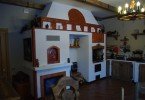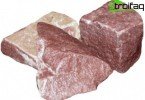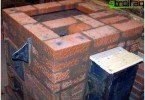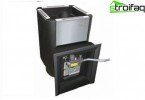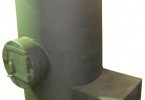Cast iron stoves for a bath
Times are changing, human outlooks on life are changing. But the attitude to the bath, fortunately, is unchanged. This room, as before, remains not only the best facility for cleansing, but also a great place for friendly meetings, leisure and just a great pastime. And therefore it is quite logical that a person seeks to create the best conditions in the bathhouse for complete relaxation. One of the main points to consider is the heating of the bath. And what is heating? This, of course, is the stove – the “soul” of the room, which gives heat. What does any customer focus on when choosing a sauna stove? Of course, at its maximum ability to cope with the tasks. Today, among the great variety of materials for furnaces, choosing the most optimal one will not be difficult. Cast iron is able to maximize meet any operating conditions and justify the investment. bath stoves.
Content
- Cast iron – what is its “strength”?
- Comparison with brick aggregates
- Cast Iron and Steel Units: Differences
- Fire safety as a decisive factor
Cast iron – what is its “strength”?
He has become a fairly frequent choice of a rational buyer. Is this amazing? Definitely not. The fact is that furnaces from other materials are not so durable and less resistant to adverse effects, including from the outside. A cast-iron unit is a joy not only for the buyer himself, but also for the specialists who carry out its installation: installing such a furnace is quite simple, you only need to decide on a place for it. There is no need to produce cladding; as a result – saving time and money.
The cast-iron bath stove does not require close attention and the burdensome care for the owner. Is “bathing permutation” planned? The oven will not become a hindrance (despite the apparent heavy weight) – it can be dismantled and then placed in a new place. The device perfectly transfers transportation.
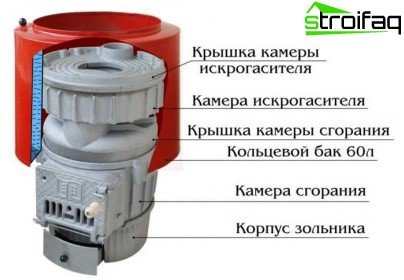
Cast Iron Bath Furnace – Components
A cast-iron stove can become a universal unit, heating both the steam room and the shower water at the same time. What does it look like in practice? A water heater is connected to it, which, in turn, is connected to a water tank. This solution is not only practical, but also economical..
All types of furnace designs are good in their own way, there is no doubt about that. But what makes the cast iron wood stove for the bath invariably attractive to the buyer? Still, tradition. Many simply cannot imagine a bathhouse without the crack of firewood and flame in a firebox. It is difficult to disagree with the fact that the “electric alternative” will not be able to cause storms of sincere emotions from leisure.
Cast iron does not differ in cheapness – this is a fact. But the brick construction “from a good stove-maker” in any case will cost more.
Cast iron stove is not just durable – it is almost eternal. This device is already ready, everything is correctly designed and calculated in it..
Rational thinking “inclines” you in favor of a cast-iron unit, but does the soul “require” a brick? So lay them a stove! With the right approach, finding the best solution is just a matter of time..
The furnace process, if desired, can be regulated – make the steam room not too hot. This is convenient, because there are people who do not feel delight from an overheated bath, and for many too hot steam is completely contraindicated (due to the characteristics of the body or the presence of certain diseases).
Comparison with brick aggregates
Where to start the comparison? Naturally, from the moment of work efficiency. Cast iron has good thermal conductivity, brick – not special. And this is a significant advantage of the first.
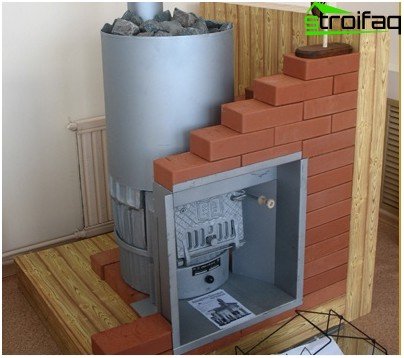
Cast iron stove for the bath during installation
Cast iron is not afraid of sharp temperature changes, which can not be said about brick. In winter, if the bath is not heated for a long time, the brick may begin to crumble: to restore the efficiency of such a furnace, you will have to consult a specialist (“fresh” financial expenses). With cast iron, such a situation simply cannot happen..
Room heating rate. The cast-iron construction is also a leader in this matter, because the brick structure needs to be thoroughly warmed up by itself before starting to transfer heat to the environment.
Sizes, occupied area. Everything is obvious here, the pros and cons, as they say, are obvious. The cast iron stove is more “sophisticated”, compact.
Related factors. A brick kiln needs a separate foundation under it. Again, additional cash, certain labor costs, time will be required. Cast iron stove – a tool for obtaining the long-awaited steam room in the shortest possible time, according to the “simplified” scenario.
Cast Iron and Steel Units: Differences
Steel furnaces are perhaps the main competitors of cast iron. Yes, on the one hand, steel is strong and reliable, but on the other, it loses noticeably to cast iron in terms of service life. True, much depends on the manufacturing technology, the thickness of the material itself. But, as a rule, cast iron lasts much longer than any analogues on the market..
These materials have a common feature – susceptibility to corrosion. Cast iron is naturally more stable. A furnace from it is able to survive two steel ones. However, it is not necessary to paint it. Well, except for aesthetic reasons.
Fire safety as a decisive factor
Beautiful and not very, voluminous and compact, with varying degrees of efficiency … You can argue for a very long time about what a real “reference” furnace for a bath should be. But all these “parameters” cannot be compared with the moment of operational safety of the product. Returning to the topic of comparison with cast-iron stoves and brick structures, it is worth noting that the latter are still fraught with some threat.
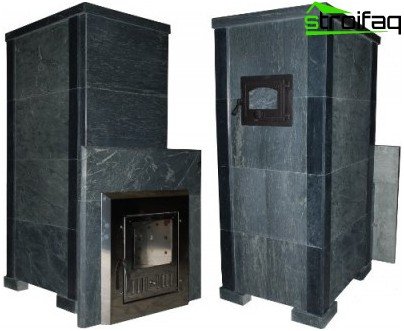
Cast iron stoves look great in the lining
Brick oven safe while new. But it’s installed in your bathhouse clearly for more than one year! Over time, the mortar, and the material itself will slowly begin to crumble. If the bathhouse does not heat up in severe frosts, “destruction” will occur more actively. Cracks that are formed increase the risk of sparks breaking through, which can lead to an extremely serious incident – a fire.
Cast iron does not crack even from strong heating – hence it remains fireproof throughout the entire service life.
Cast iron stove in the interior
The stove should not only be a source of heat in the bath, but also a worthy decoration. It is impossible to say that the cast-iron unit looks “more charming” than the others. Painted samples made of various materials look like “twin brothers” – at first glance, to determine that “this is steel”, but “here is cast iron” is not easy.
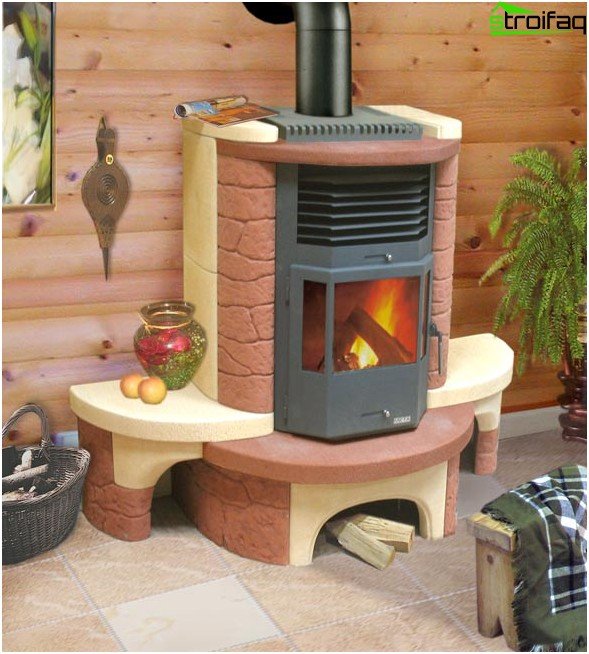
Cast iron stove in the interior of the bath
But the cast-iron stove confidently wins on issues of aesthetics: it will be able to maintain its presentable appearance much longer than the “main competitor”.
Its doors are not prone to distortions and subsidence, which is also important.
We draw objective conclusions
Summing up all of the above, we can confidently highlight the following advantages of cast iron stoves:
- fire safety;
- lack of wall deformation during temperature changes;
- unpretentiousness in leaving;
- simple installation;
- there is no need for facing work;
- “Mobility” – a significant plus in the restructuring, redevelopment of the bath;
- high resistance to corrosion;
- the ability to “quickly” warm up and keep warm for a long time;
- high efficiency;
- the ability to adjust the intensity of heating;
- durability;
- aesthetic appeal;
- do not need a separate foundation.
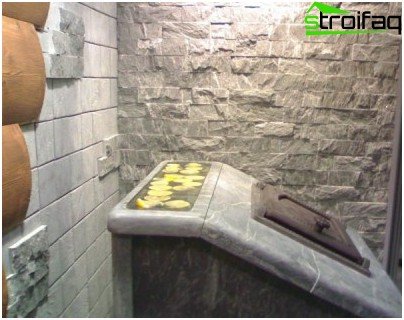
Cast iron unit for a bath: reliability and durability
The disadvantages of the units include:
- a lot of weight. It complicates the transportation – but nevertheless, it is possible (!);
- price. Although against the background of the whole spectrum of advantages to a conscious buyer, it seems by no means blatant, but quite justified.
The cast-iron stove for a bath today is a new look at quality and practicality. Not a rarity, not a relic of the past, and not even a new-fangled trend, but a truly worthy unit. Naturally, progress added its own adjustments, but they only benefited.
In any case, the choice is always yours. Try to clearly determine what exactly you expect from the bath, and only then proceed with any purchases. Do not forget, the construction should be planned with a focus on comfort from being in it. Creating a cozy atmosphere in the bath is a delicate matter. On the “heart” of the bathhouse is an oven, attention falls first. Strive to choose the best: reliable, practical, pleasing to the eye and warming the soul and body!


